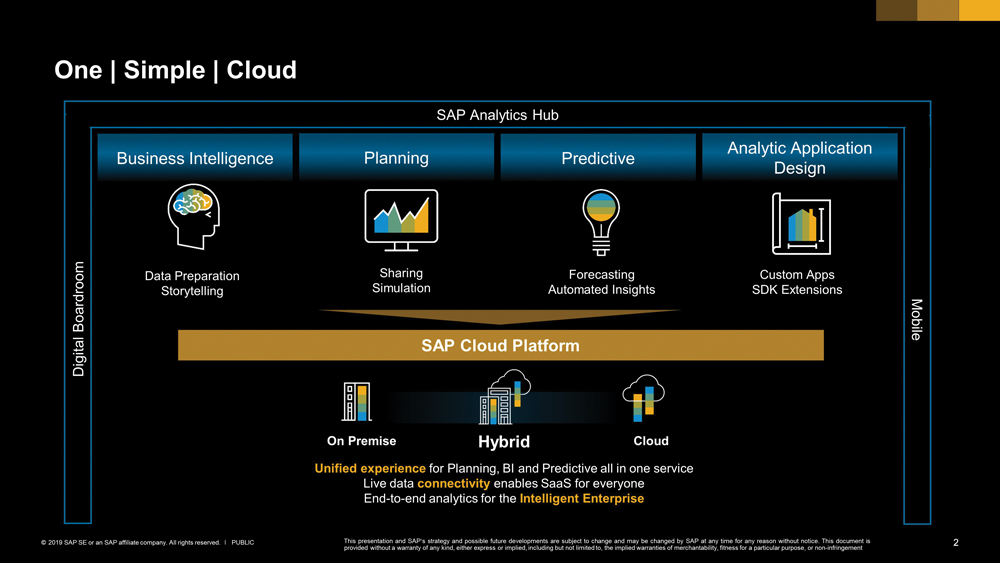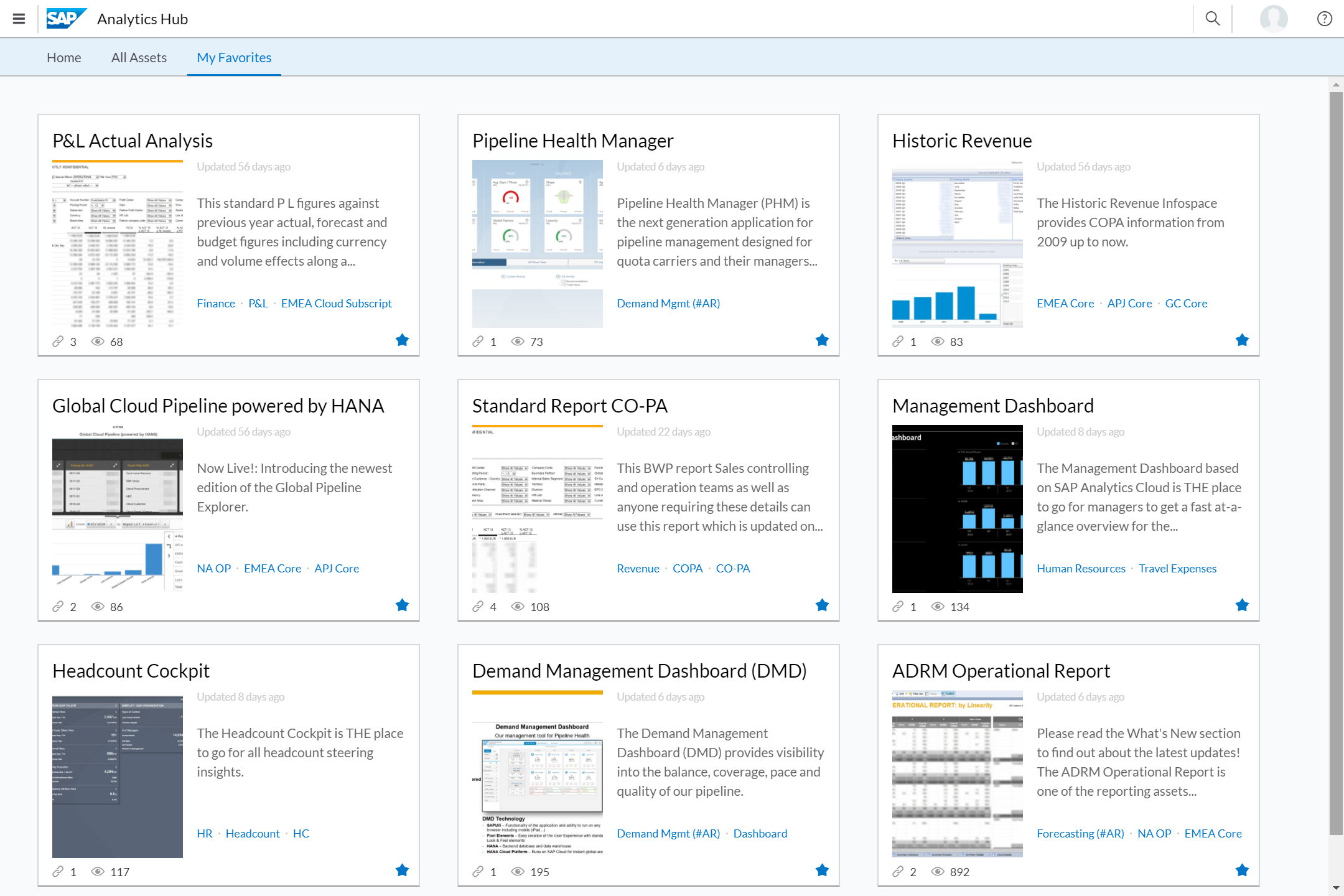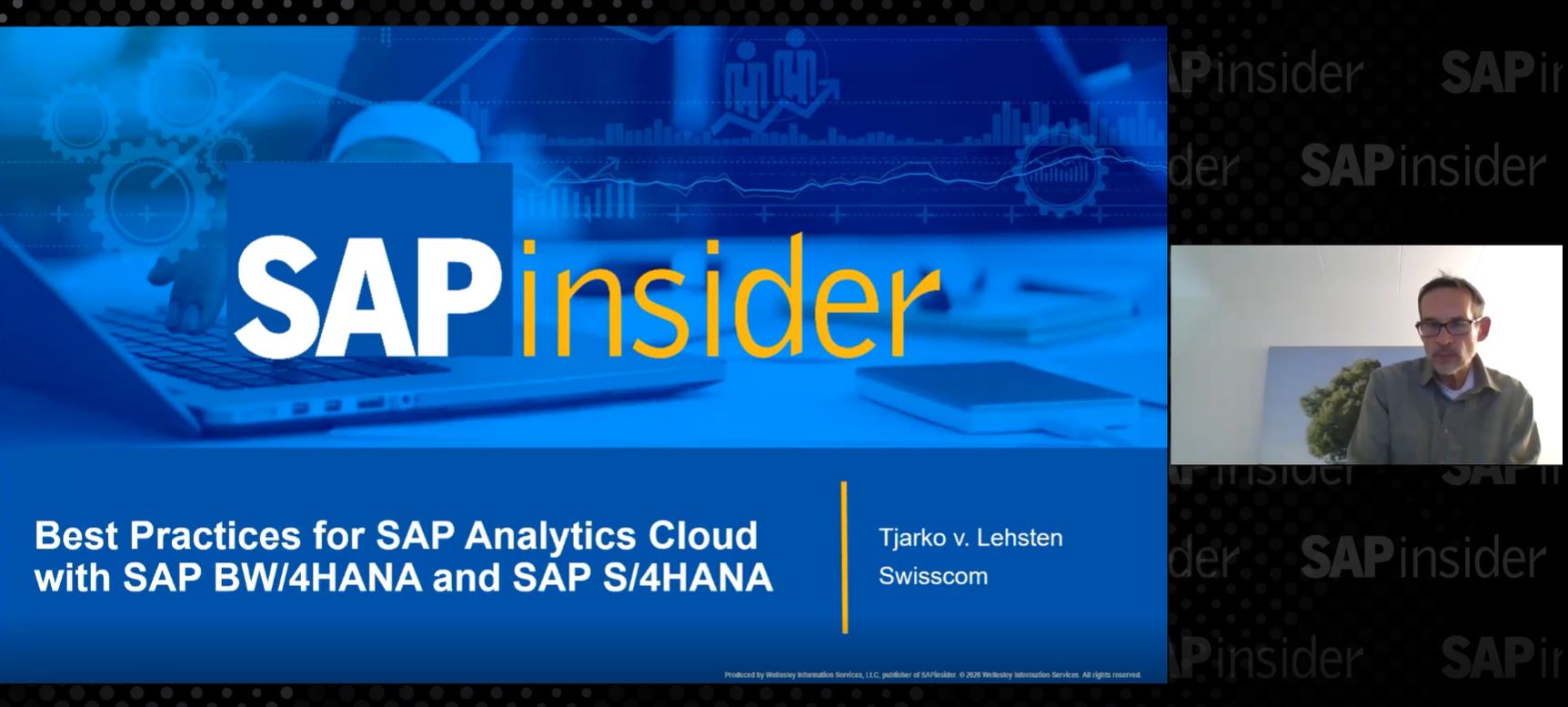Are You Ready for One Simple Cloud?
An Introduction to SAP Analytics Cloud — and 7 Reasons Why SAP Customers Should Adopt It Today
Meet the Experts
If you are active in the SAP market and in the overall SAP ecosystem, by now, you are most likely familiar with SAP Analytics Cloud, which is SAP’s self-service platform for data visualization, exploration, dashboarding, planning, and predictive analytics. However, many SAP customers continue to have questions about the new SAP Analytics Cloud platform — they wonder what it offers, if it’s appropriate for their environment, and what it integrates with, replaces, and/or complements. For those who might need a deeper introduction to the new platform, this article will help to clarify exactly what it is, how it fits into the overall SAP analytics portfolio, and what potential scenarios exist for customers to start using SAP Analytics Cloud and integrating it into their existing SAP BusinessObjects Business Intelligence (BI) and SAP back-end landscapes.
To begin, let’s look at how SAP Analytics Cloud fits into the overall SAP analytics portfolio.
SAP Analytics Cloud and SAP On-Premise and BI Offerings
In addition to the new self-service platform, which provides native direct access to SAP S/4HANA, SAP BW/4HANA, SAP HANA, and SAP Cloud Platform, SAP continues to offer on-premise clients for those customers not yet considering cloud-based solutions for self-service BI. There are many BI products from the SAP BusinessObjects solution suite that offer support for a variety of use cases — such as SAP Analysis for Microsoft Office for integrated analytics and planning; SAP Lumira for data visualization, dashboards, and analytics; and SAP Web Intelligence and SAP Crystal Reports for classic reporting, automated publishing, and scheduling.
Explore related questions
Does this now mean, that SAP Analytics Cloud replaces and acts as legal successor to all these products? For sure not. All those products are still viable solutions that can be used in concert. However, SAP Analytics Cloud provides customers with one simple cloud-based environment, which provides live connectivity to on-premise data sources, such as SAP Business Warehouse (SAP BW), SAP HANA, and SAP BusinessObjects Universes. This environment provides customers with a large variety of capabilities and use cases, starting with typical data exploration and data visualization scenarios from BI requirements to planning and forecasting to deeper insights as part of more detailed scenarios.
With SAP Analytics Cloud, SAP is not only combining use cases from the BI, planning, predictive, and application design areas, but it is also giving customers the ability to start with a hybrid scenario, where they are reusing their existing assets from their on-premise SAP BusinessObjects BI landscapes — such as investments into the Universe layer — and combining those assets with new scenarios in the cloud (see Figure 1). In fact, the hybrid scenario is how most SAP Analytics Cloud customers get started, where they reuse their existing investment from their on-premise SAP BusinessObjects BI landscape and combine this information in SAP Analytics Cloud — either with additional information from a typical on-premise back-end system, such as SAP HANA, SAP BW, or SAP S/4HANA, and then leverage the power of SAP Analytics Cloud and expand their use cases beyond the classic reporting and analytics scenarios into areas such as planning, predictive analytics, and more advanced insights.

Figure 1: SAP Analytics Cloud capabilities available to SAP customers
With SAP Analytics Hub, customers are provided with a single front end for all analytics content (see Figure 2). SAP Analytics Hub offers customers more than just a unified experience — it offers an environment where they can provide their business users a single point of access to their critical information — whether that data resides in SAP Analytics Cloud, SAP BusinessObjects BI solutions, or in other SAP and non-SAP assets on premise or in the cloud. It also lets business users search across different reports and across systems to learn more about and access the most critical information available to them. Users have seamless access to the content — no actual data or analytics is stored, only metadata — which is readily available for documentation, categorization, and curation.

Figure 2: SAP Analytics Hub offers a single front end for all analytics content
Now that I’ve provided a brief overview of the overall portfolio, next I’ll share my view of why SAP customers should not delay in taking their analytics into the cloud with SAP Analytics Cloud.
7 Key Reasons for Moving Analytics to the Cloud
I am sure that customers will look at the overall SAP Analytics Cloud roadmap — and perhaps even look back at their existing SAP BusinessObjects BI landscape — and question why they should consider adding the new self-service platform to their overall BI and analytics strategy. Here, I will provide my personal list of seven key reasons why I believe they should adopt SAP Analytics Cloud for their journey into the cloud.
1. A Single Platform for Multiple Use Cases
By combining the product areas of BI, planning, predictive, and application design into one simple cloud environment, SAP Analytics Cloud allows customers to leverage one user experience and one platform for those use cases.
2. Professionally Designed Dashboards and Embedded Scenarios
With the latest addition of SAP Analytics Cloud, Analytics Designer, customers now have a cloud-based environment that allows them to go beyond the typical data visualization and BI self-service scenario. It also provides the necessary capabilities to create professionally designed dashboards as well as embedded scenarios — for example, managers have an expenses overview dashboard with the option to approve or decline specific expenses directly from the dashboard with a status change in the SAP S/4HANA system using OData function calls.
3. Live Connectivity to On-Premise Systems and Existing BI Tools
Customers have the unique capabilities to not only leverage data they can upload for local modeling, but also the option to leverage live data from their on-premise systems, such as SAP BW, SAP HANA, and SAP S/4HANA — and even use the functionality to combine that data on-the-fly for further insights. Customers can also get a head start with SAP Analytics Cloud by leveraging their already existing investment in SAP BusinessObjects BI solutions by establishing live connectivity from the Universe layer to the platform.
4. One Identical Experience for Every User
SAP Analytics Cloud offers users one identical experience without having to worry about a variety of BI tools:
- Consumers can view their visualization stories via either a browser or mobile device.
- Analysts and power users can leverage the more advanced capabilities of SAP Analytics Cloud — such as Smart Insight, Smart Discovery, and Smart Predict — to share even deeper insights with their colleagues.
- Planning teams can use the same functionality as the BI team, but now combine this with their planning workflows — for example, use the BI capabilities to view company performance over the last 12 months, use the planning capabilities to create the next version of the plan, and use the more advanced “smart” capabilities to compare the new plan version with the forecasted values.
- IT users can leverage not just the administrative parts of the platform, but also provide business users with professionally designed dashboards and applications in a stricter governed approach.
5. Simulation Workflows and True Self-Service BI.
In addition to the typical data visualization and data discovery options, SAP Analytics Cloud also allows customers to create simulation workflows and provides the necessary options to establish a true self-service BI environment for business users.
6. A Single Point of Entry to ALL Analytics Content
With SAP Analytics Hub, SAP provides the option to create a true single point of entry for all users toward their critical assets, including the option to integrate non-SAP based content.
7. Flexibility, Mobility, and Scalability
With the ability to use content from SAP Analytics Cloud right away for mobile consumption as well as the ability to move toward a Digital Boardroom scenario, it’s clear that customers still have lots of room to grow their BI strategy — and this platform can help them get there.
Even after considering all the good reasons I just laid out, some customers might still wonder where SAP Analytics Cloud fits into the overall strategy from SAP. I can tell you with certainty, the road ahead is a firm cloud-first strategy.
The Road Ahead for SAP Analytics Cloud
SAP Analytics Cloud is positioned as one simple cloud-based analytics platform, providing customers the opportunity to leverage their existing investment as part of the hybrid analytics approach and becoming the standard analytics platform to power the intelligent enterprise. Following its overall cloud-first strategy, SAP has named SAP Analytics Cloud as the strategic analytics platform for all SAP business applications moving forward — whether that’s data visualization and discovery, application design spanning BI, planning, and predictive use cases (for standalone, SAP S/4HANA, and other cloud apps), or augmented analytics for all analytics use cases. To learn more about SAP Analytics Cloud (or to sign up for a free trial), go to https://www.sapanalytics.cloud.








